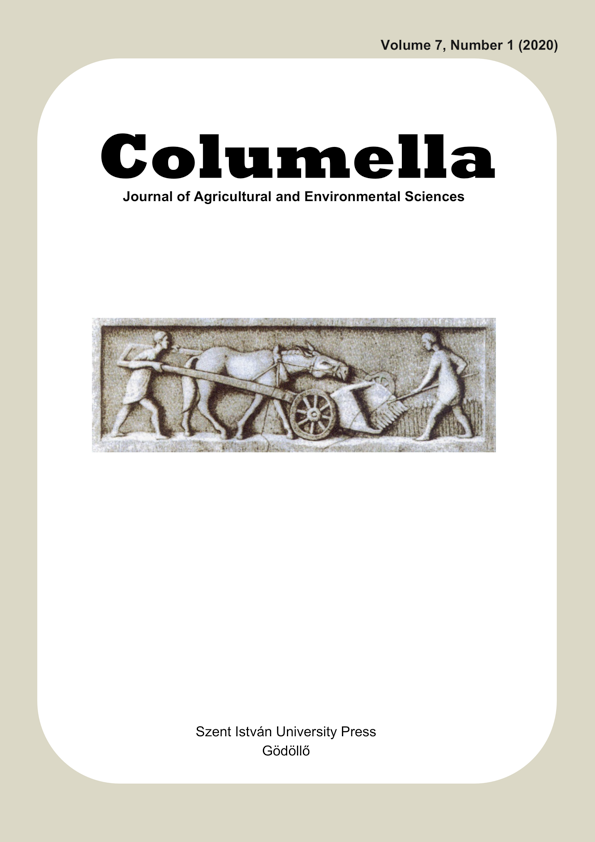Effect of tillage and fertiliser treatments on yield of maize (Zea mays L.) hybrids
DOI:
https://doi.org/10.18380/SZIE.COLUM.2020.7.1.57Keywords:
maize, mouldboard, strip tillage, ripper tillage, fertiliser, hybrid, year effectAbstract
This research was conducted in a spilt-plot design at the University of Debrecen Látókép Research Station, site (N 47°33’ E 21°27’) in 2015 and repeated in 2016. There were three main plots, each 1.0 ha in size which represents the tillage treatments: moldboard plowing (MT), strip tillage (ST) and ripper tillage (RT). Maize hybrids, Loupiac (FAO 380) and Armagnac(FAO 490) were sown at 80,000 plants ha-1 with a row spacing of 76 cm in the main plots which were subdivided to accommodate three fertiliser treatments (N0 kg ha-1 (control); N80 kg ha-1; N160 kg ha-1) with four replications. The hybrids were harvested at the end of the growing cycle with a Sampo 2010 plot harvester and the grain moisture content was computed at 15% moisture to arrive at the final yield. The findings revealed RT produced the highest yield of 10.37 t ha-1, followed by MT and ST with 10.22 and 9.60 t ha-1 respectively. There was no significant difference(p>0.05) in yield between the RT and MT treatments. However, both the RT and MT were found to be statistically significant (p<0.05) when compared to ST treatment. In 2015, a relatively dry year, yield of ST plots were not significantly different compared to MT and RT plots. A positive interaction between tillage and fertilisation was evident, with higher yield variation (CV=40.07) in the non-fertilised (N0) tillage plots, compared to those which received the N80 and N160 kg ha-1 treatments (CV=22.42). Fertilizer application greatly increased the yield of maize and accounted for 43% of yield variances. The highest yield (11.88 t ha-1) was obtained with N160 kg ha-1 treatment, followed by N80 kg ha-1 ( 10.83 t ha-1), while the lowest yield (7.48 t ha-1) was recorded in the nonfertilised plots(N0 kg ha-1). Year effect was highly significant with vast variation in yield between the two years, ranging from 8.36 t ha-1 in 2015 to 12.43 t ha-1 in 2016 for the same set of agrotechnical inputs. In 2016, higher yield was obtained with increase fertiliser dosage due to favourable growing condition which allowed for better fertiliser utilisation. However, with 2015 being a relatively dry year there was no yield increasing effect with higher fertiliser dosage ( N160 kg ha-1 ). Loupiac (FAO 380) was the better performing hybrid, with a yield of 11.09 t ha-1 compared Armagnac (FAO 490) with 10.60 t ha-1 . The adaptability traits of the two hybrids appears very similar, since the yield differential between the two hybrids was almost constant (0.48 vs 0.49) in both years , despite the vast variation in weather condition.
Downloads
Published
Issue
Section
License
Copyright (c) 2020 Karamchand Bramdeo, Tamás Rátonyi

This work is licensed under a Creative Commons Attribution-NonCommercial-NoDerivatives 4.0 International License.










